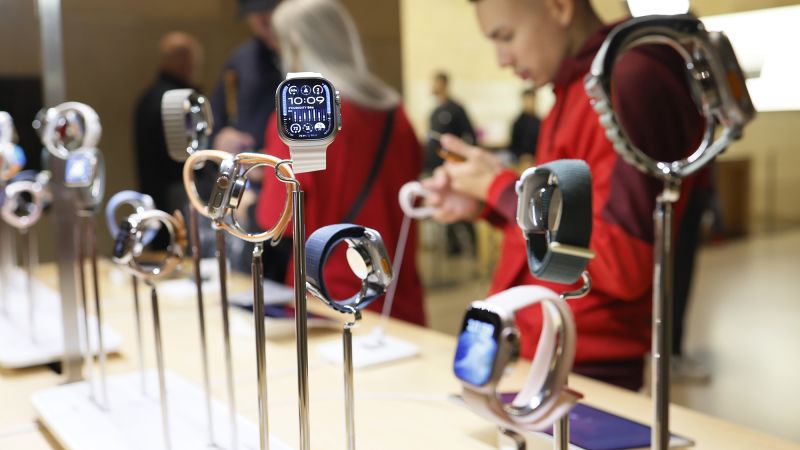Recently, Apple Inc. made headlines with a significant announcement concerning the restoration of its blood oxygen detection feature on select smartwatch models, a functionality that had previously been halted in the United States due to a patent conflict. This contentious issue arose from a ruling by the International Trade Commission (ITC), which concluded that Apple had infringed upon a patent held by Masimo, a digital health company specializing in pulse oximeter technology.
Following this ruling in 2023, Apple faced significant challenges. The ITC’s order affected only new models of the Apple Watch sold within U.S. borders, leaving existing users of prior versions unscathed. Apple, however, expressed its disagreement with the ITC’s decision. Two years ago, amid a crucial holiday shopping season, Apple was compelled to remove its popular smartwatch line from U.S. stores, creating a temporary gap in availability that undoubtedly impacted sales.
In an official statement released on a Thursday, Apple confirmed that users who own an Apple Watch Series 9, Series 10, or Ultra 2 model would soon gain access to blood oxygen monitoring through a software update. This feature is designed to provide vital insights into users’ respiratory health by measuring blood oxygen levels. The functionality was originally introduced on the Apple Watch Series 6, rolled out in 2020 at the onset of the COVID-19 pandemic, highlighting not just the device’s capabilities but also its potential as a health monitoring tool.
Notably, while the blood oxygen monitoring feature may not be the most compelling advertisement for consumers, it plays a crucial role in positioning Apple favorably against its competitors in the health technology sector. With rivals such as Samsung ramping up their health-related smartwatch features and Google poised to unveil a new version of its Pixel Watch, Apple’s strategic maneuvers in health technology may become increasingly significant.
Furthermore, more ambitious health initiatives, such as noninvasive glucose monitoring, are reportedly under exploration by Apple. This reaffirms the company’s commitment to establishing the Apple Watch as not merely a luxury gadget but a device potentially capable of life-saving tasks. Such capabilities align with the broader industry trend toward integrating health monitoring features into consumer technology.
In practice, blood oxygen monitoring functions by shining light through the skin to evaluate the saturation level of oxygen in the user’s blood—a process akin to the fingertip clip monitors often used in medical facilities. The reinstatement of this feature, part of the watchOS version 11.6.1 update, is set to benefit a significant segment of users who had previously been deprived of this functionality. To activate it, Apple Watch users need to ensure their devices are updated accordingly and connected to an iPhone running the latest iOS version.
Apple’s efforts come against a backdrop of increasing investments in digital health by technology competitors, indicating a vigorous battle for market leadership. The landscape suggests that features like blood oxygen monitoring, while they may have initially been viewed as add-ons, are now pivotal in maintaining a competitive edge. As these developments unfold, the ramifications for the smartwatch market and digital health sector at large are yet to be fully discerned, but the role of innovative health technology appears set to deepen.
With Apple’s actions now placing the blood oxygen detection feature back in the hands of users, the company seems to reaffirm its position as a leader in integrating health solutions into its product line. In doing so, Apple not only addresses a previous setback but also aligns itself strategically with future industry innovations in healthcare technology.











